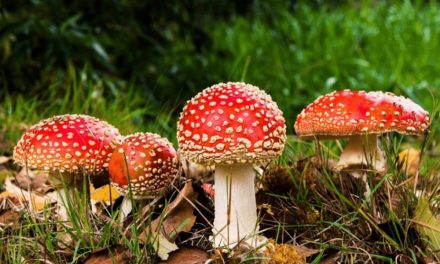TYPES OF SUGARS AT THE NUTRITIONAL LEVEL
Added sugar: It has been added during some processes. It is not found naturally in food. The recommendation is to reduce the consumption of added sugar. The less added sugar you consume, the better.
Natural sugar: It is the sugar present in food naturally, that is, the sugar present in fruit, for example. Although chemically both are the same, as with calories, the origin of the sugar matters a lot. Sugar is naturally present in food and many other substances (vitamins, minerals, fibre, water …). The amount of sugar may be the same, but the quality and the body’s response will be different.
The World Health Organization recommends that the sugars present in our diet do not contribute more than 10% of daily calories and maintains that if this quota does not exceed 5%, the health benefits are probably multiplied.
By the term sugars, he refers to free sugars such as table sugar, those added to soft drinks, all processed products and fruit juices – without setting limits to those found in whole fruits and vegetables. Fresh vegetables.
Sugar should not be eliminated from the diet, and its intake should be adapted according to the weight and the physical activity carried out.
It is essential to know that the fibre, fat, and proteins in the foods in your meal will intervene in the speed of absorption of their sugars. That is to say, in a certain way, we can modify the behaviour of the sugar we eat if we combine it with foods rich in fibre or that contain proteins or fats.
The importance is to eat a varied and balanced diet and to choose foods or products that, in addition to energy, provide us with other essential nutrients.
An example of this is the YOSOY vegetable drinks that generally do not contain added sugars. Although they do contain sugars present in their vegetable sources, they are also an additional source of fibre and other phytochemical substances.
If we move the recommendation of sugar consumption to a standard diet (for a person with moderate or sedentary physical activity) of 2,000Kcal, 10% will represent 200Kcal. If each gram of sugar represents 4 Kcal, we will discuss not exceeding 50g / day. If we stick to 5%, this amount would be reduced to 25g / day.
Sugar is very addictive due to the release of dopamine it produces
Sugar can be highly addictive for many people. Like drugs, sugar promotes the generation of dopamine in the brain’s pleasure center.
Artificially sweetened foods have ingredients that we do not find in natural foods and that the body cannot control. For this reason, those who are particularly susceptible to addiction may take more risks with sugar.
Many people believe that this addiction is less dangerous than other addictions and do not pay much attention to its control. This attitude can be harmful, so it is recommended to those who suffer from it not to consume artificially sweetened products. Although it can be challenging to adopt a diet of this type, it is the only way to avoid relapsing into addiction.
Those living with sugar addiction should seek medical and nutritional attention to change harmful consumption habits. In some cases, psychological care is also necessary to have complete treatment.
Sugar is one of the factors that can contribute to obesity in children and adults
The way sugar affects hormones, and the brain is the ideal recipe for obesity. It causes satiety to decrease and addicts to lose control over their eating.
It is not surprising to read that people who consume more sugar are also more likely to be overweight or obese. This applies to people of all ages.
According to the studies carried out, the sector that is most affected by sugar consumption is children. On the one hand, it has been found that the amount of sweeteners present in the products that children take is very high.
But in addition, the infantile organism is less prepared to face the problems that can derive from sugar. Statistics indicate that the consumption of sweets and sweetened foods can increase the risk of obesity in children by 60%.
Sugar can lead to higher cholesterol levels and more heart problems than fat.
For decades we have believed that saturated fat is the leading cause of heart problems. However, new studies have shown that sugar, not fat, causes the veins to clog and decrease blood flow.
This is one of the most dangerous effects of fructose on metabolism.
The scientists indicate that fructose can increase the number of triglycerides, lower good cholesterol, increase the amount of glucose in the blood and insulin levels in just ten weeks.
All of these problems end up increasing your chances of having a heart attack or heart disease.
obese teenager
The amount of sugar we should consume
The American Heart Association recommends that women consume no more than 24 grams of added sugar per day. This equates to 6 teaspoons or 100 calories (less than in a can of soda).
The problem is that the average amount Western women take is 18 teaspoons of sugar a day.
Most of the time, we don’t even realize that we are consuming sugar. We can find different types of sweeteners in products of all kinds: commercial salad dressings, juices, agave nectar, light foods, cheeses, etc.
To avoid the consumption of unwanted sugar, it is essential to read the labels and eliminate or limit the consumption of those products that contain some added sugar.
The importance of keeping an eye on your sugar intake
We indeed find a new health enemy every so often, and now it seems to be sugar. Still, the risks of consuming large amounts of sweeteners are too significant to ignore.
Although we have become accustomed to the constant use of sugar in various foods and beverages, the actual amount that the body needs is minimal.
The important thing is to eat a healthy and balanced diet and reduce sugar consumption to a minimum. Good habits, like exercising regularly, will help you have a better quality of life.





